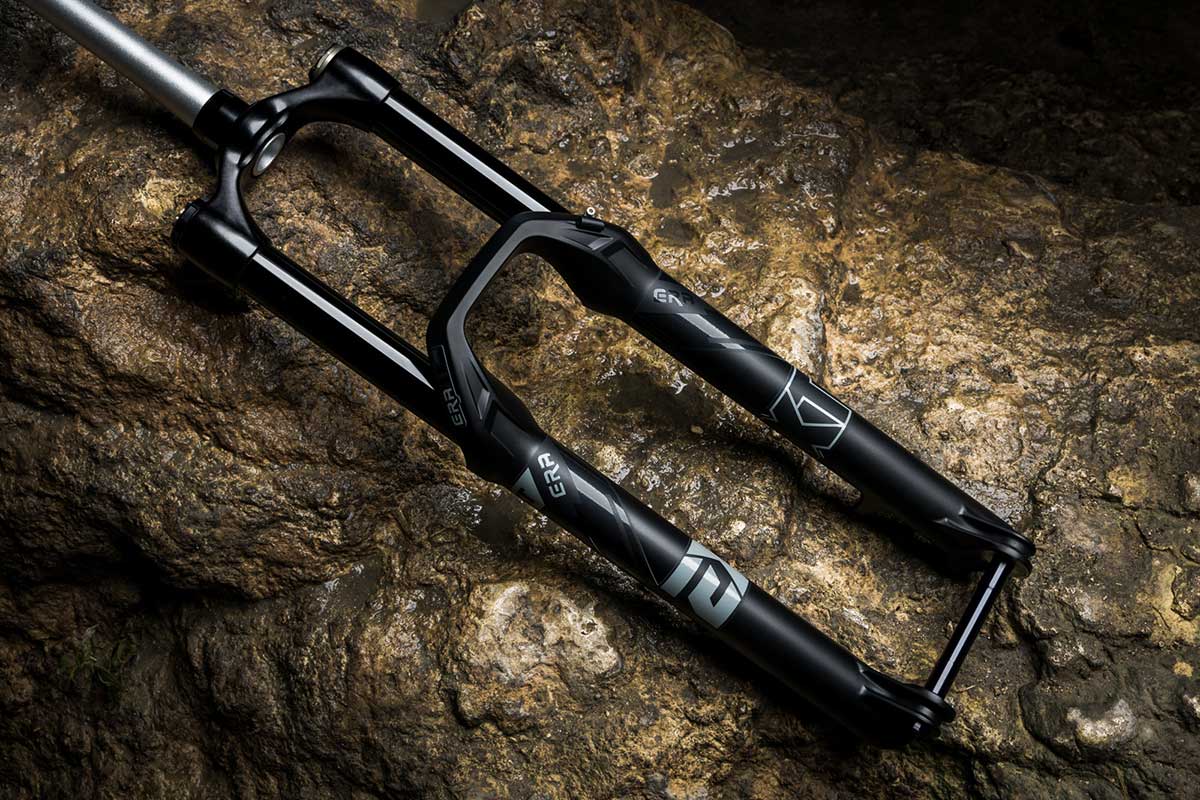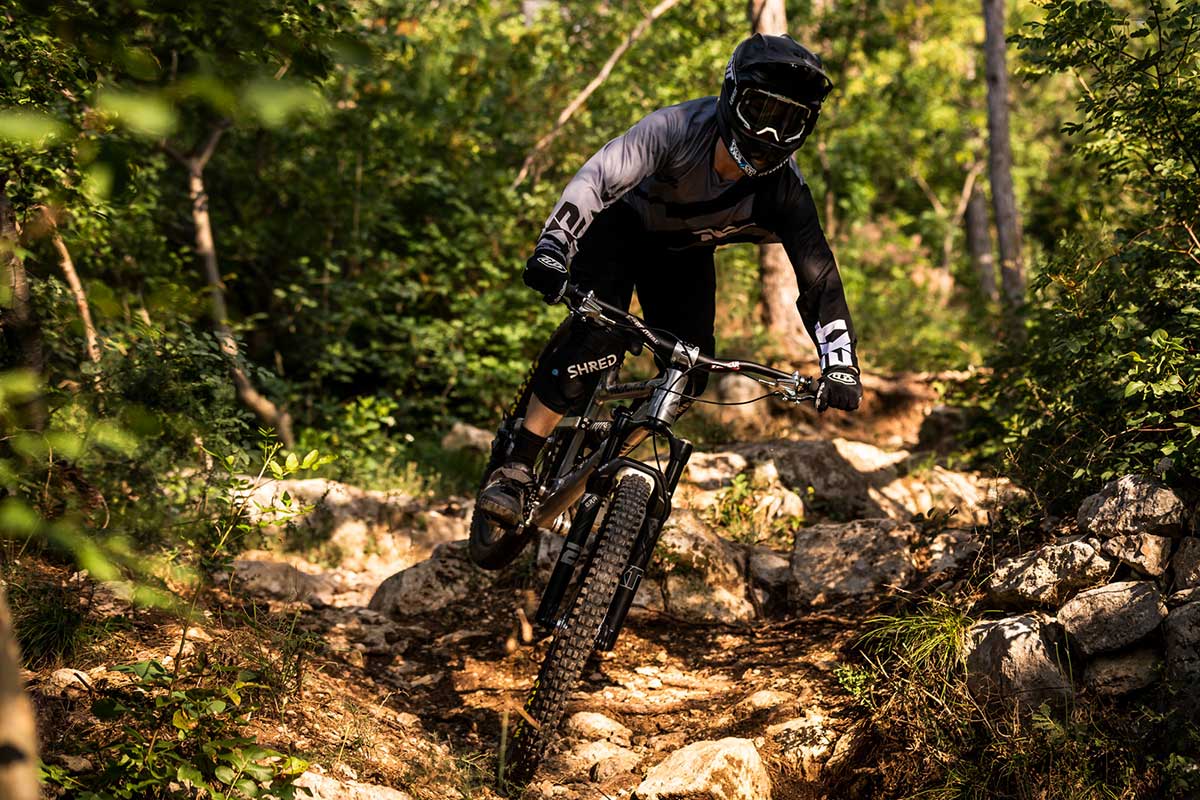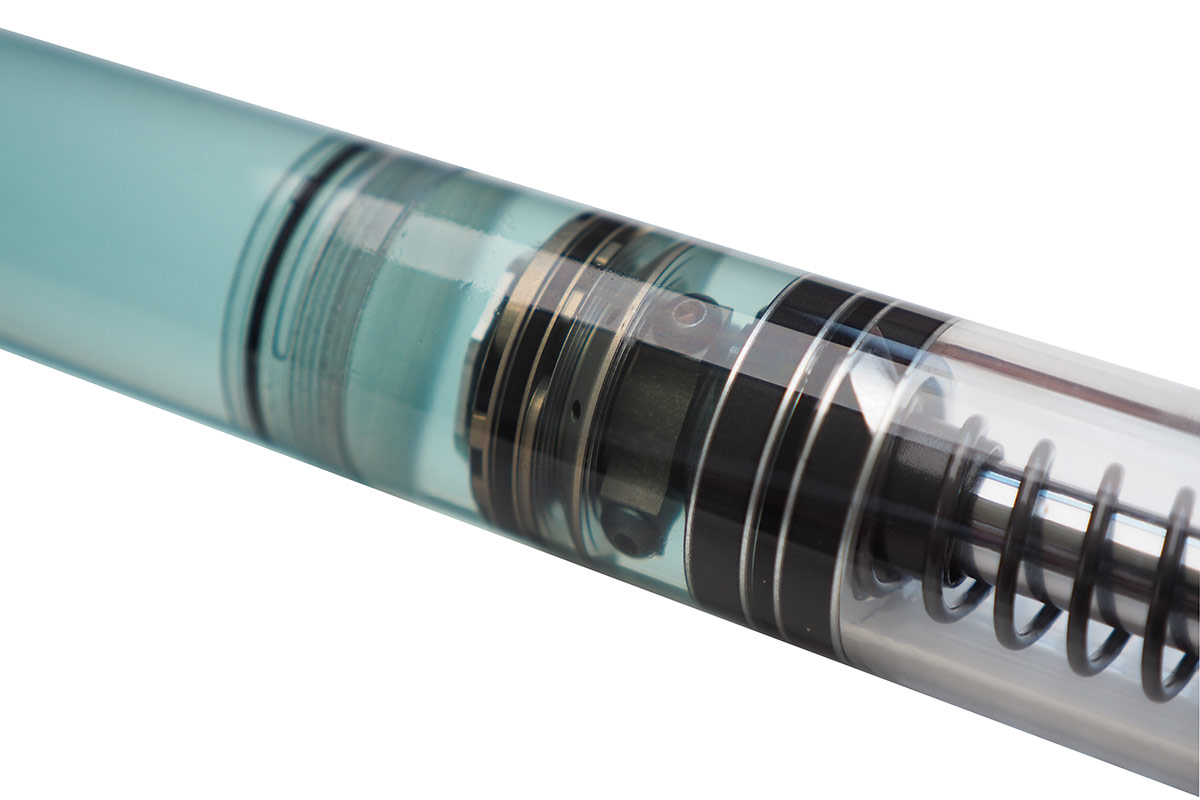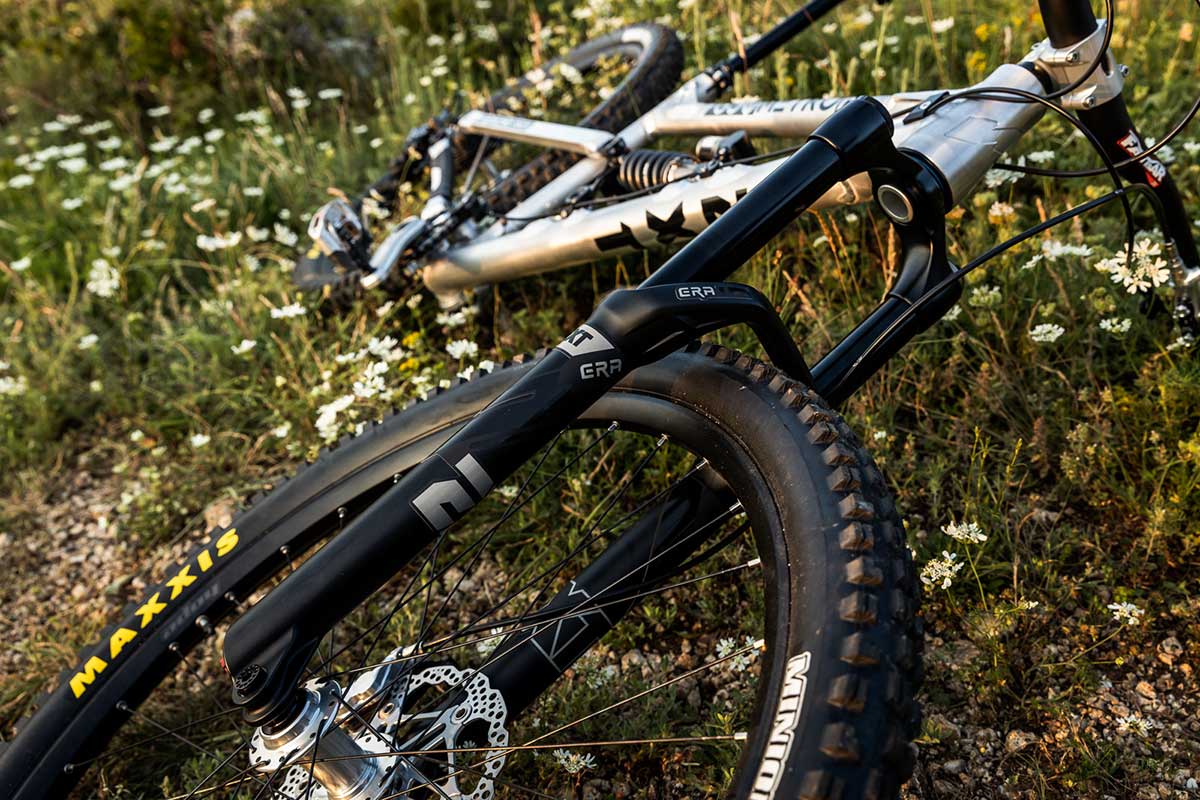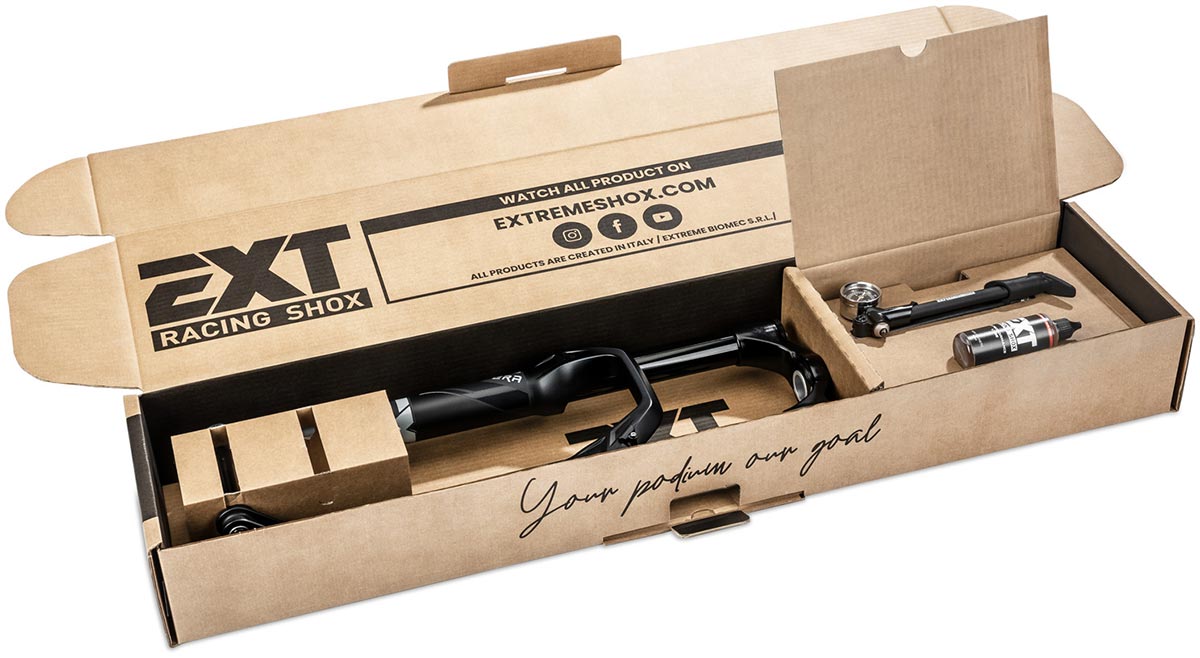Ultra high-end shock brand, Extreme Shox, have released their first ever mountain bike fork. The EXT ERA fork uses an air/coil hybrid spring system, with a damper shaft offering external adjustments to High Speed Compression, Low Speed Compression and Rebound.
Available in 140mm, 150mm, 160mm and 170mm travel options, the new EXT fork is now an upgrade option for trail, all-mountain and full-on enduro mountain bikes. Here, we give you EXT’s thoughts on the air/coil hybrid spring system, and explore why this fork uses not one but two positive air chambers, in addition to a negative air chamber.
EXT ERA Fork
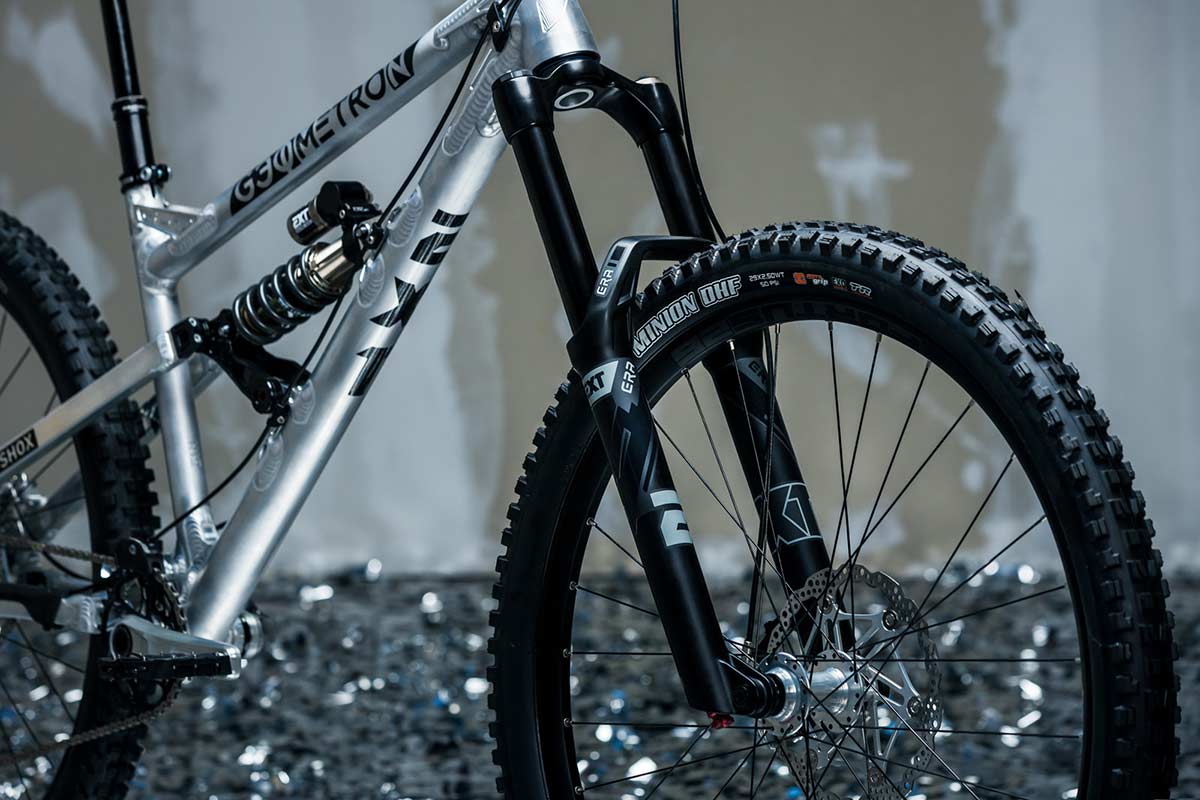
- Fork Travel: 140mm, 150mm, 160mm, 170mm
- Wheel Size: 29″
- Fork Offset: 44mm
- Spring: Air/Coil Hybrid
- Adjustments: High Speed Compression, Low Speed Compression and Rebound
- Claimed weight: 2280g (29″ 170mm w/uncut steerer, axle and lube)
- Price: € 1480 + VAT
EXT designed the new ERA HS3 fork with mid-stroke support at the top of the list of priorities. Support is arguably the most important ride quality we want out of our suspension forks. A “diving” fork can be a nightmare to ride because it can drastically compromise a bike’s geometry.
At full compression of your fork, whether you’re on an XC bike, a trail bike or a DH bike, several things happen: First up, the bike’s wheelbase shortens considerably. Secondly, the head angle steepens rapidly. Ultimately, all those lovely geometry figures you poured over while choosing your next bike – they go straight out of the window.
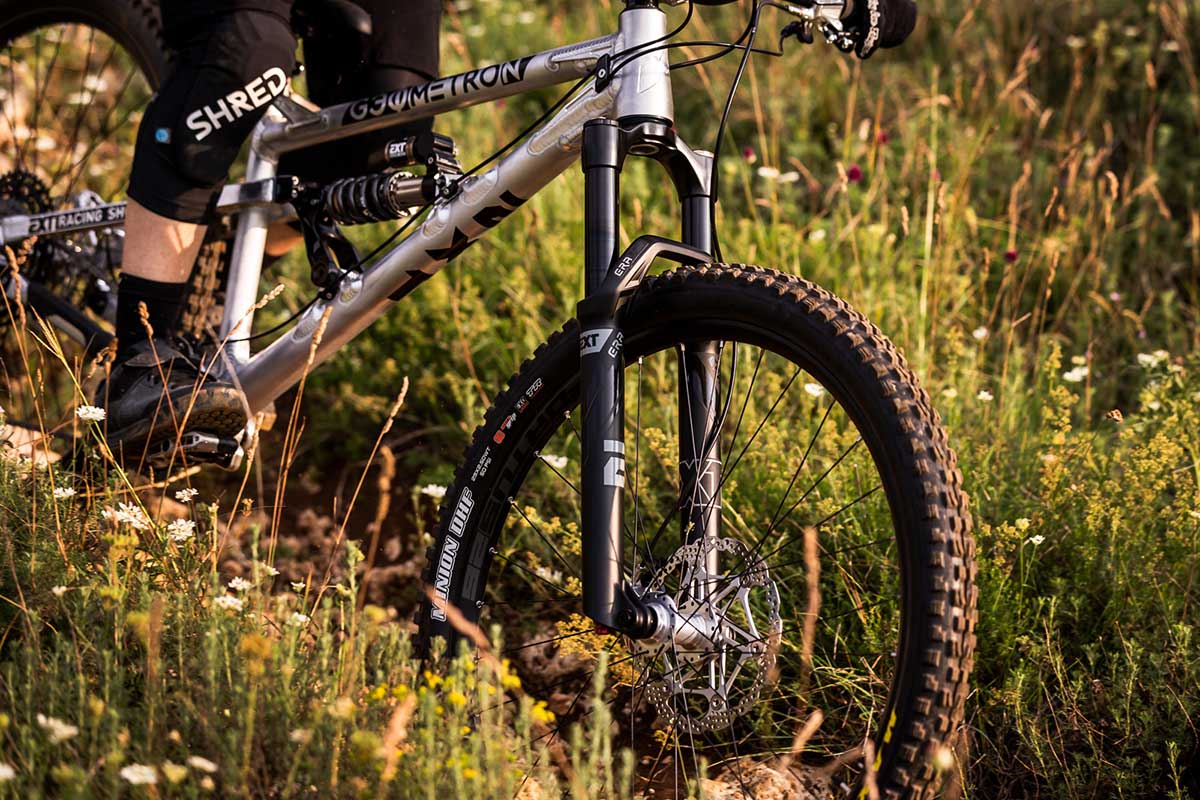
Of course, it’s OK to use full travel of your fork. The reason you haul a 170mm travel fork up the hill is because you want 170mm of “give” when you’re slaying the day’s trails.
That said, you don’t want it diving into that travel for every compression, small or large. A fast bike is a stable bike, and that means having stable geometry. (Keep in mind, your rear is usually compressing nearly simultaneously, so it’s not like all of the compression is coming from the front, but the front needs to hold its own)
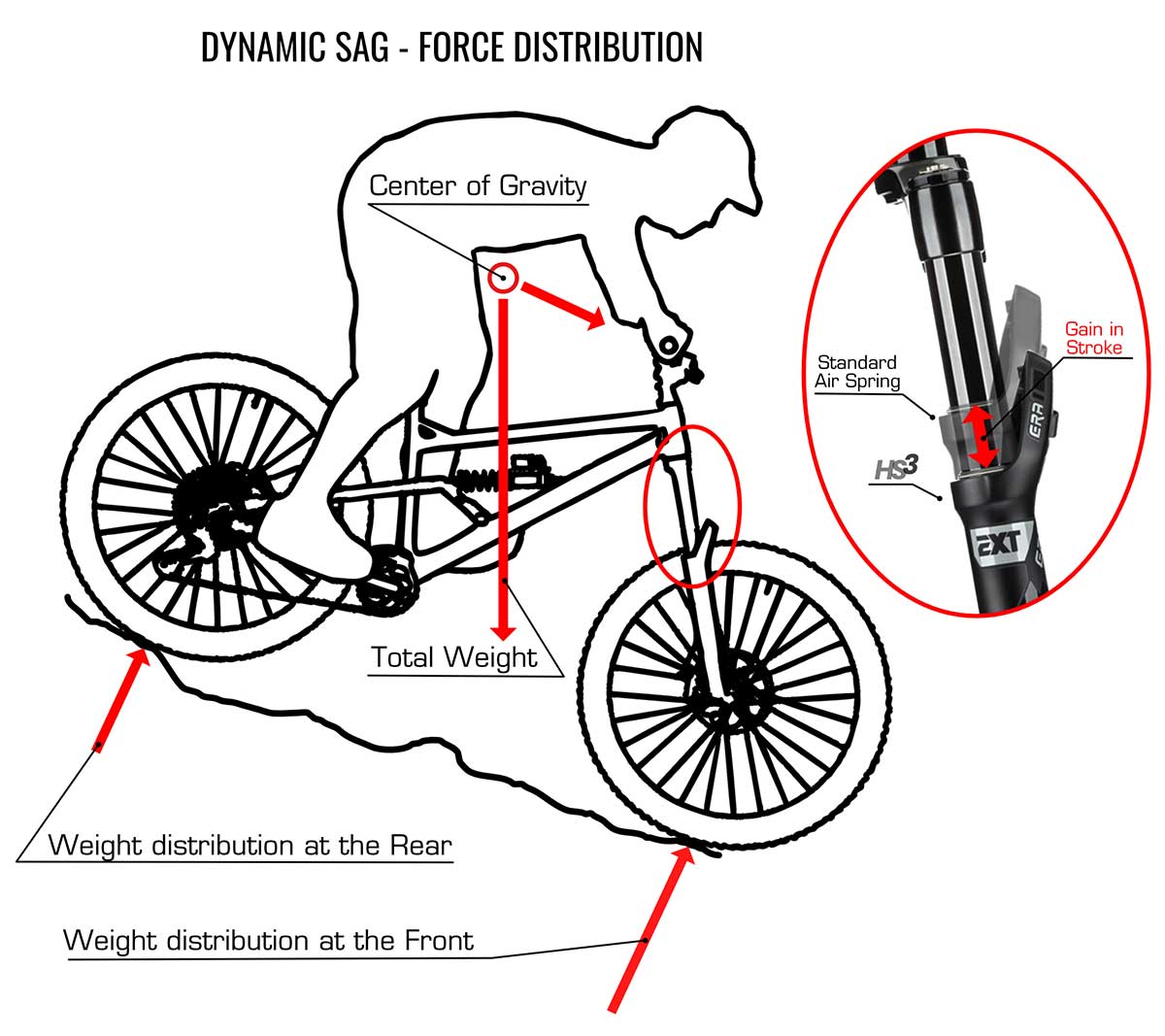
This is why EXT prioritized the mid-stroke support of their new ERA fork. More support means subtler changes to the bike’s geometry, and a more stable ride feel. So what have they done to achieve that?
HS3: Two positive air chambers

EXT are of the opinion that a single positive air chamber is insufficient to provide good mid-stroke support. You can improve it with the use of volume spacers up and to a point but, this comes with an increase in harshness from the end-stroke of the spring.
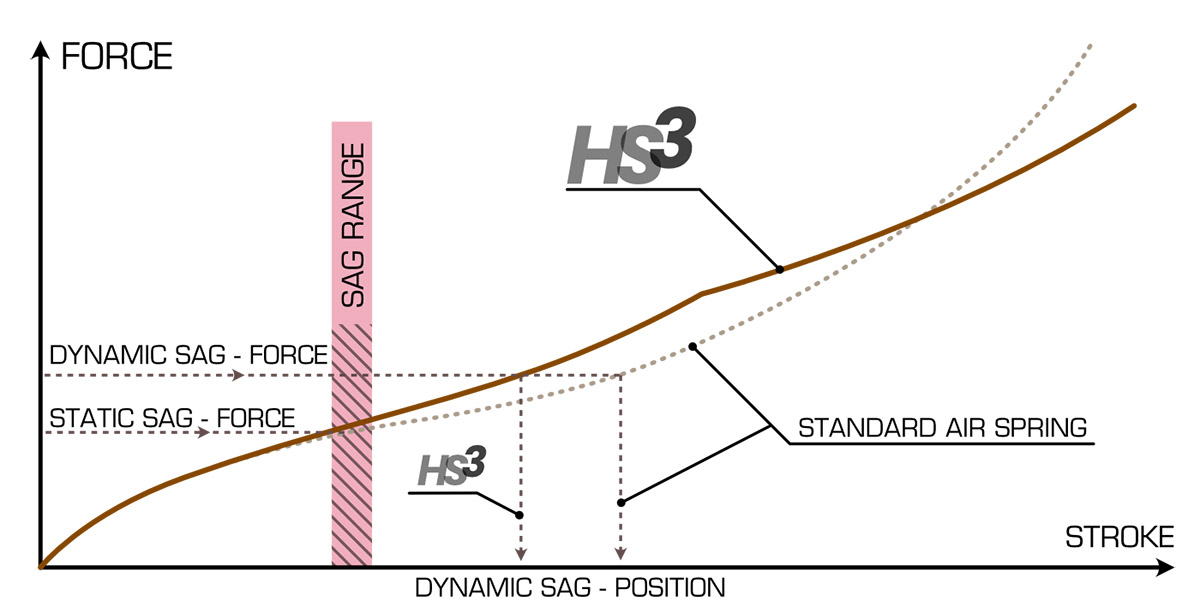
The HS3 air spring with its dual positive air chamber design is said to create a more linear spring rate that gives the rider more support around the dynamic sag region of the stroke.
Pressure of both air chambers is adjustable by the rider, and EXT provide a detailed chart to advise riders on how to set their pressures. The negative chamber is activated from the main, lower pressure positive air chamber that sits next to it in the shaft.
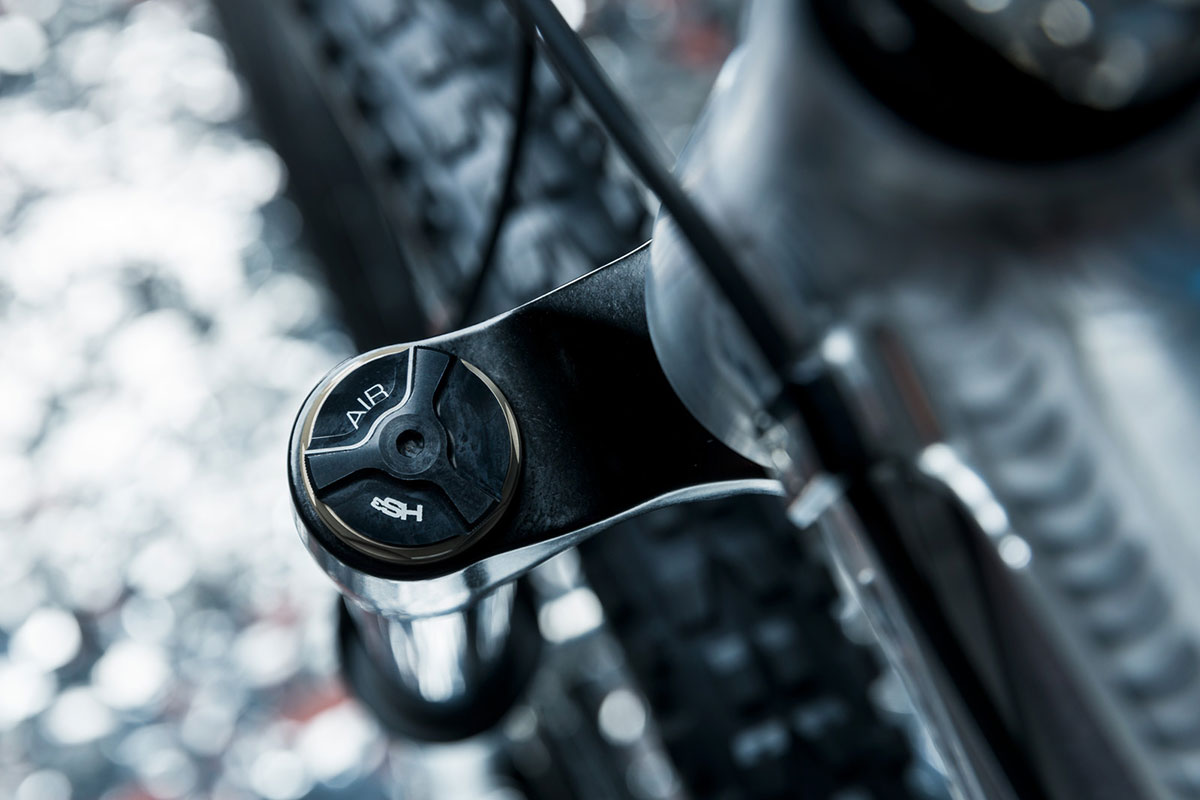
The air shaft also features an integrated coil spring which becomes active at the sag position. This is said to create a frictionless sliding movement resulting in a highly responsive fork. Speaking of friction…
Low friction… everything
EXT wanted to make their new ERA fork as frictionless as possible. Sadly, it’s not only the spring and damper that dictate the overall ride feel of your suspension fork, friction and stiction contribute significantly too.
Friction is especially apparent when the fork is experiencing high side loads. To minimize this augmented friction, EXT added a floating internal shaft guide in the damper cartridge. This shaft guide is made up of aeronautical carbon charged PEEK material, and it’s there to manage radial forces.
It allows the fork stanchions and lowers to undergo some degree of flex under side loads, while allowing the damper shaft to remain in its low-friction true configuration.
In further efforts to minimize friction, EXT developed a proprietary low-friction DU bushing guide material, damper cartridge coating and EXT SuperFinish shaft. The HS3 air spring also uses EXT’s dedicated grease, developed specifically to offer low friction for both low and high velocity movements.
That integrated coil spring we mentioned – that works with the air spring, and serves to completely eliminate stiction to give the rider more accurate feedback through the tire.
EXT ERA HDRV damper
The damper cartridge on the EXT ERA fork uses a new bump valve design called the High Dynamic Response Valve (HDRV). As we’ve seen on EXT shocks, the compression and rebound damping circuits are entirely separate entities.
The ERA’s HDRV damper uses two separate shim stacks for mid and high speed compression damping, and an internal floating piston.
We asked the guys at EXT how exactly these two shim stacks work. They said that the main shim stack creates the pressure drop and deals with the main flow control. The secondary shim stack sits on top of the first stack via a dynamic cage.

It acts as a preloading system and only affects the high speed part of the main valve flow and damping characteristic. This is similar to the design EXT use in some of their valves for motorbike suspension.
Ultimately, it means adjustment of high speed compression damping doesn’t interfere with the low speed compression and sensitivity. The damper offers 12 clicks of adjustment for both LSC and HSC.
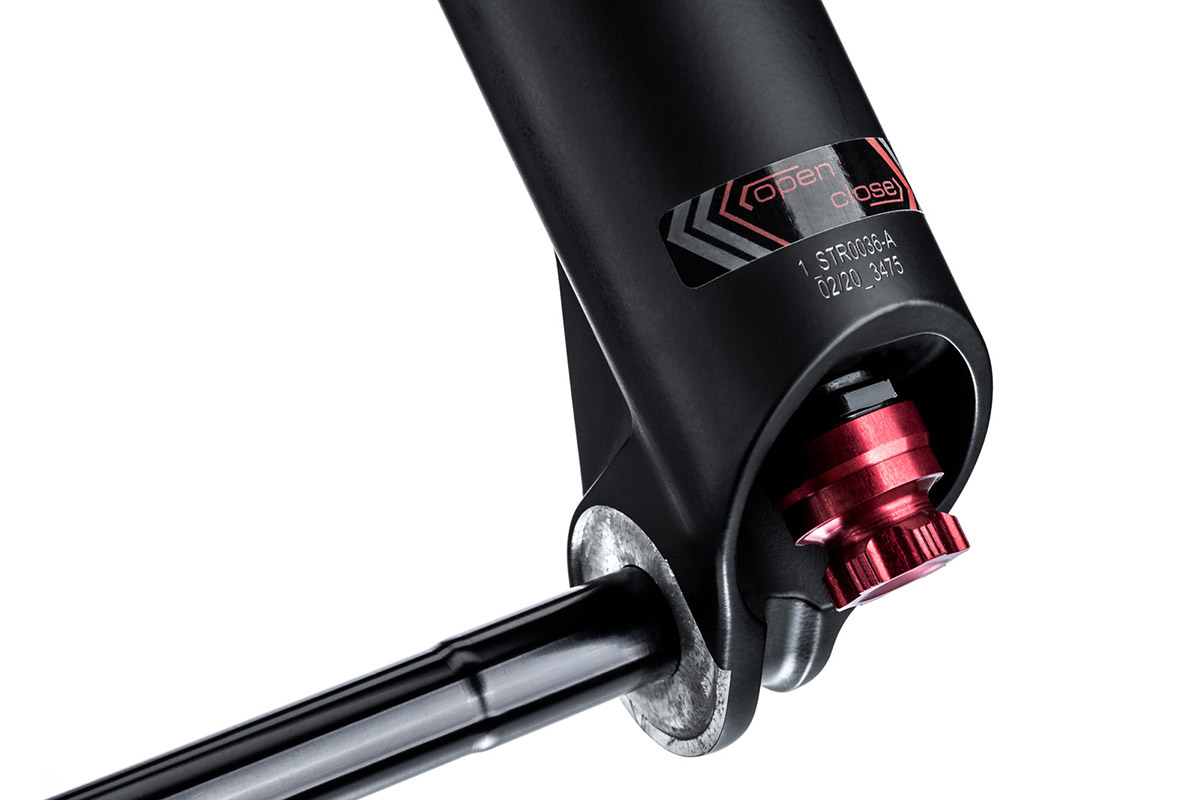
The internal floating piston in the damper of the EXT ERA fork is guided by a thrust bearing. This is a system EXT use to decouple the side load created during compression to recover shaft volume. It transforms these lateral forces into a rotary movement, thereby reducing friction during the sliding movement.
EXT say it delivers a very dynamic response that is super smooth due to a complete lack of stiction.
Stiff Chassis
The new EXT fork has a unique-looking steerer tube-crown interface. This shape was optimized by the EXT engineers for stiffness in all directions.

It is forged 7050 aluminium crown that is around 20% stiffer, frontally and laterally, compared to a “standard” fork crown.
The magnesium lowers on the EXT ERA fork are also optimized for stiffness with an asymmetrical wall thickness.
Pricing & Availability
The new EXT ERA fork retails at €1480 + VAT and is available direct from Extreme Shox now. Hold tight for a coil spring version; it’s on its way!
